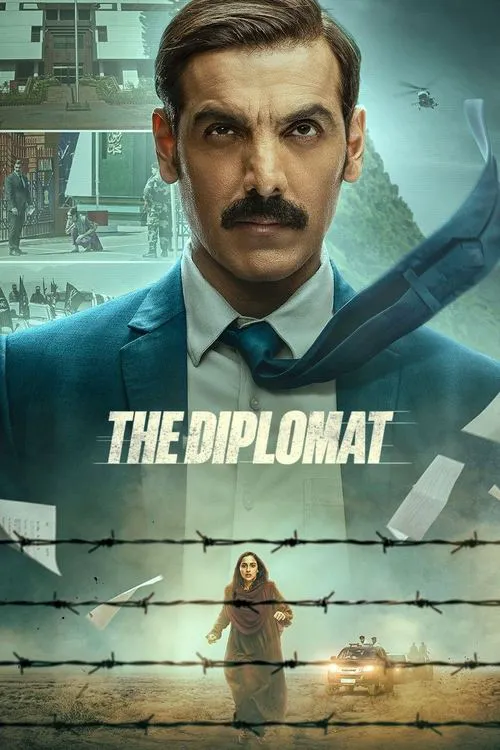The Diplomat

Plot
Set against the fragile backdrop of India-Pakistan relations, "The Diplomat" brings to life the extraordinary tale of India's External Affairs Minister, Meenakshi Mukherjee, with actress Konkona Sen Sharma embodying her in the film. Based on real-life events, the movie delves into the intricate diplomatic dance that ensued as Mukherjee navigated a complex situation – that of freeing a young woman, Afiya Siddiqui, who alleged an arranged marriage forced upon her in Pakistan. The story begins with Mukherjee, a seasoned diplomat with years of experience, returning from a successful stint in the US as Chief of Staff to the Indian UN Ambassador. As the Minister of External Affairs, she takes on the challenge of securing the release of Afiya, a young Indian national, who claims to have been coerced into marrying a Pakistani man under duress. The crux of the situation is not just Afiya's situation, but the geopolitical web that ensnares her – where cultural, social, and national sensitivities converge, further complicating her release. Mukherjee's road to securing Afiya's liberation is fraught with obstacles. Besides the formidable challenge of India-Pakistan relations, now strained over the Kashmir dispute and numerous terrorist attacks, Mukherjee must also negotiate with Pakistan's Foreign Minister, a cunning diplomat who understands well the intricacies of politics and psychology. This character-driven subplot showcases the delicacy of Meenakshi's task, demanding a deep understanding of the socio-cultural nuances of Pakistan. As Mukherjee embarks on her mission, she is met with resistance both within her own administration and in Pakistan. Opposition from various quarters within her government poses a challenge as attempts to discredit her rise. Her interlocutors, drawn from disparate quarters, argue that diplomacy must be backed by equal or greater firepower – thus strengthening the perceived resistance and hostility within her own country. Moreover, Mukherjee faces multiple adversaries – including government officials trying to turn the situation against her and groups that have exploited Afiya's situation for their own means. These actors push the narrative to its limits, elevating the stakes and making it more difficult for Mukherjee to maneuver the fragile diplomatic balance. Meanwhile, Mukherjee's relationship with Afiya remains an emotional throughline. Their first encounters reveal the strength and resilience of the young woman, her determination to fight for her rights, and ultimately, to return to her cherished homeland. However, Mukherjee's own backstories, fraught with personal and emotional highs and lows, begin to reveal themselves, connecting her to Afiya's plight in a deep way that makes her resolve even more firm. Throughout the movie, with each passing scene, the tension and drama continue to escalate, underscoring the precarious state of bilateral relations and, more crucially, Mukherjee's dwindling time, resources, and influence to secure the woman's release. Mukherjee finds herself engaging in one tense conversation after another – dodging every move Pakistan makes to contain Afiya, with increasingly sinister motivations that weigh heavily on Meenakshi's shoulders. Pivotal negotiations between Mukherjee and Pakistan's Foreign Minister occupy several crucial scenes. Their exchanges move deftly between protocol and Machiavellianism; words chosen deliberately to send calculated messages rather than be taken at face value. Here lies the cinematic might of 'The Diplomat' – where what's said and left unsaid carries weight. On multiple fronts, the movie crafts memorable conflicts involving diplomats and politicians testing resolve, understanding, and willpower against the grinding world of diplomacy, navigating through what some label a deep-red, morally-dubious, grey area. Beneath its urgent surface lies a nuanced examination of how, against a backdrop of conflict-ridden international diplomacy, an official may feel suffocated by an out-and-out hostile external climate or opposed opposition from within their society. It raises necessary, inevitable questions – can individual actions push against seemingly impenetrable walls, forming the framework for deeper possibilities?
Reviews
Recommendations

